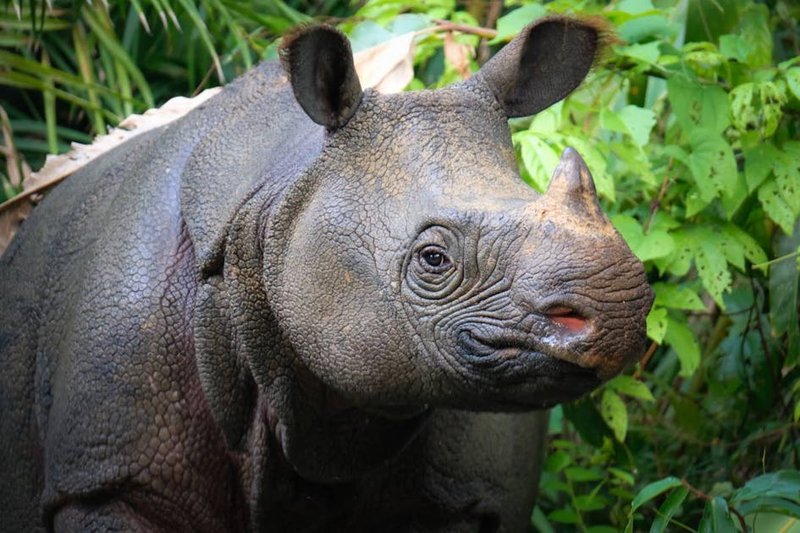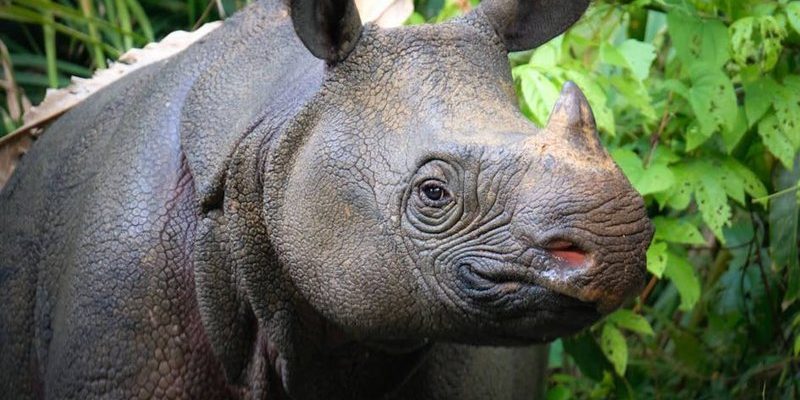
You might be wondering how these ancient giants manage to navigate their world. Imagine trying to live in a place where everything seems stacked against you—harsh weather, limited resources, and constant danger. Yet the Javan rhino not only endures, but it also plays a crucial role in its habitat, helping to maintain the delicate balance of its ecosystem. Let’s delve into their fascinating survival tactics and uncover the secrets of how these incredible animals adapt to their harsh jungles.
Habitat and Distribution
The Javan rhinoceros has a unique habitat, primarily found in Ujung Kulon National Park, the last remaining stronghold for this species. This dense tropical rainforest offers various resources, but also presents challenges like thick vegetation and unpredictable weather.
One of the main ways the Javan rhino survives is through its ability to thrive in a diverse ecosystem. The park offers a mix of lowland forests, grasslands, and riverine areas. This variety helps the rhinos maintain their diet, which mainly consists of leaves, fruits, and shoots from shrubs and trees. There’s a reason why they’re often described as “the keepers of their forest”; their eating habits shape the landscape by preventing overgrowth.
However, the limited distribution of Javan rhinos makes them incredibly vulnerable. Their territory is contained, meaning any significant change—whether due to climate change or human interference—could drastically impact their survival. Despite this, the rhinos have adapted to their specific habitat, showcasing resilience in the face of challenges.
Diet and Feeding Habits
When it comes to survival, food is a top priority. The Javan rhino feeds mainly on leaves, twigs, and fruits, relying on a varied diet to meet its nutritional needs. Their strong lips are perfectly designed to grasp foliage, allowing them to reach even the toughest leaves.
Javan rhinos are known to spend a good amount of their day feeding—around 18 hours! Picture this: a large rhino slowly snacking on foliage, moving through the lush undergrowth as it seeks out the tastiest morsels. Their ability to digest high-fiber vegetation is crucial, allowing them to extract essential nutrients from what might seem like tough, unappetizing plants.
What’s fascinating is how these rhinos are selective feeders. They often prefer certain plants over others, which might seem picky, but it actually helps maintain the health of their environment. By consuming specific plants, they prevent any single species from dominating the ecosystem, promoting biodiversity that benefits countless other species.
Adaptations to Climate
The tropical climate of their habitat can be intense, with high humidity and fluctuating temperatures. Javan rhinos have specific adaptations that help them cope with these conditions. For instance, their thick skin serves as protection against both physical threats and harsh weather.
Here’s the thing: the skin of the Javan rhinoceros contains numerous folds, which not only makes them look more rugged but also helps in regulating their body temperature. When it’s hot and humid, these folds allow for better moisture retention and help them stay cool. It’s like having built-in air conditioning!
Additionally, Javan rhinos are crepuscular, meaning they are most active during the cooler parts of the day—early morning and late afternoon. This behavioral adaptation helps them avoid the scorching midday sun. By timing their foraging to cooler moments, they reduce the risk of overheating and ensure they have access to food without excessive struggle.
Threats and Conservation Efforts
Despite their remarkable adaptations, Javan rhinos face numerous threats. The primary danger to their survival comes from habitat loss, mainly due to agricultural expansion and human encroachment. As more land is converted for farming, these rhinos find their living space shrinking, making it harder for them to find food and mates.
Additionally, poaching remains a significant threat. Though hunting Javan rhinos for their horn is illegal, the demand still exists in some regions. Conservationists have been working tirelessly to combat poaching, often putting their own lives at risk to protect these majestic animals.
Efforts to conserve Javan rhinos have ramped up in recent years. The establishment of protected areas, strict anti-poaching laws, and community awareness programs have all played a role in their survival. Organizations like the World Wildlife Fund and local Indonesian groups are tirelessly fighting to ensure these rhinos not only survive but thrive.
Social Behavior and Reproduction
Social interactions are another fascinating aspect of Javan rhinoceros survival. While they tend to be solitary animals, they do have a complex social structure. Adults usually prefer to roam alone, but mothers and calves share a close bond.
The breeding process is slow, which can be challenging for their already dwindling population. Female Javan rhinos have a long gestation period, lasting about 15-16 months. After giving birth, mothers care for their calves for several years, teaching them vital survival skills. This close-knit relationship helps ensure that the young rhinos learn how to navigate their environment effectively.
Interestingly, the social interactions between Javan rhinos often involve scent marking. They communicate using their urine and feces to mark territory. These markings help other rhinos understand who is nearby and whether it’s safe to approach. It’s like leaving a message for the next rhino to find!
The Role of Javan Rhinos in Their Ecosystem
Javan rhinos aren’t just survivors; they also play a crucial role in their ecosystem. As herbivores, they help shape their habitat by controlling plant growth. Their feeding habits prevent certain plants from taking over, allowing for a diverse range of flora to thrive.
This biodiversity supports other wildlife, creating a rich tapestry of life within their ecosystem. Birds, insects, and even smaller mammals benefit from the spaces created by the Javan rhinoceros. They truly are a keystone species, meaning their existence is vital for the health of the entire ecosystem.
Moreover, when rhinos move through the jungle, they create trails that other animals can use. These paths become highways for various species, facilitating movement and helping maintain the overall balance within their habitat.
Concluding Thoughts on Javan Rhinoceros Survival
The story of the Javan rhinoceros serves as a powerful reminder of the fragility of life—and the strength of adaptation. Despite facing tremendous challenges, these magnificent creatures have found ways to thrive in some of the harshest environments on Earth. Their unique diet, behavioral adaptations, and crucial role within their ecosystem highlight the importance of protecting them for generations to come.
As we learn more about these incredible beings and the threats they face, it’s vital to support conservation efforts that ensure their survival. After all, every species plays a part in the intricate web of life, and losing even one can have ripple effects throughout the ecosystem. By understanding and appreciating the resilience of the Javan rhinoceros, we can foster a deeper connection to our planet and its remaining wild inhabitants.

